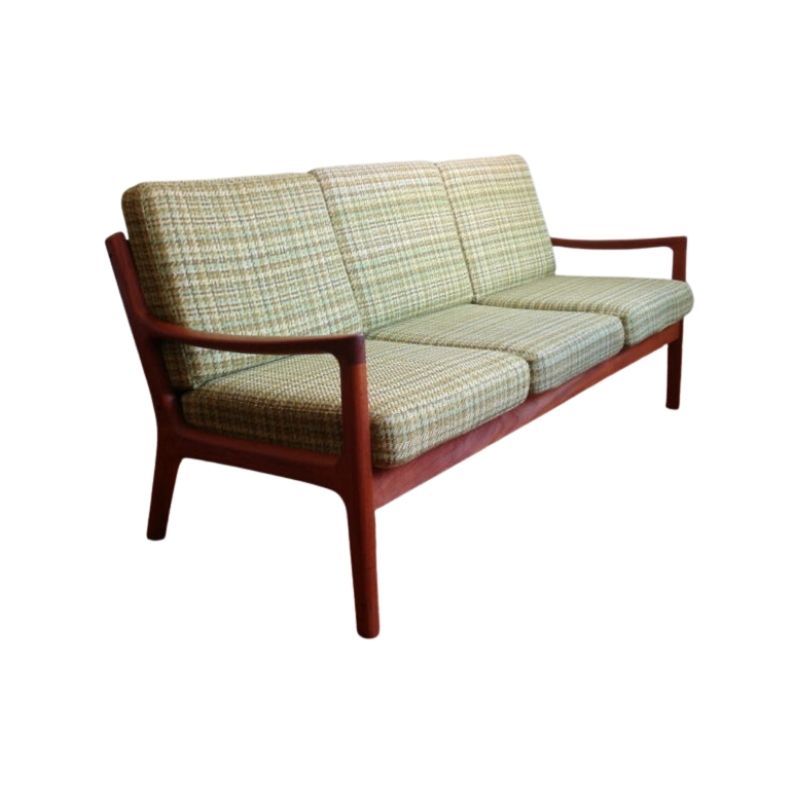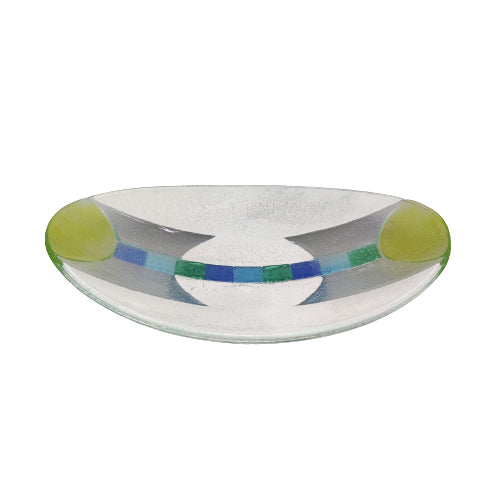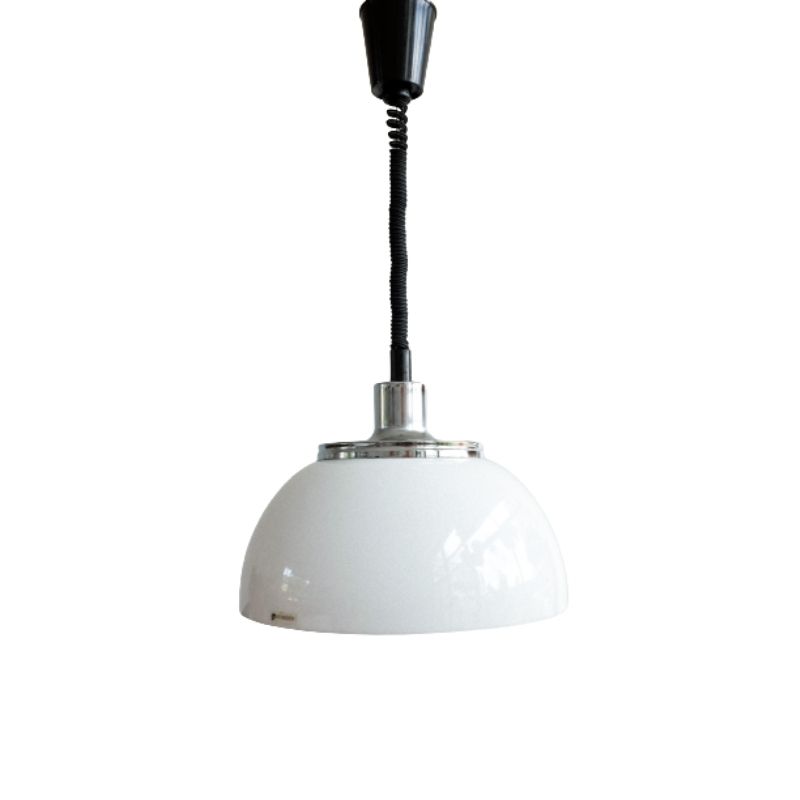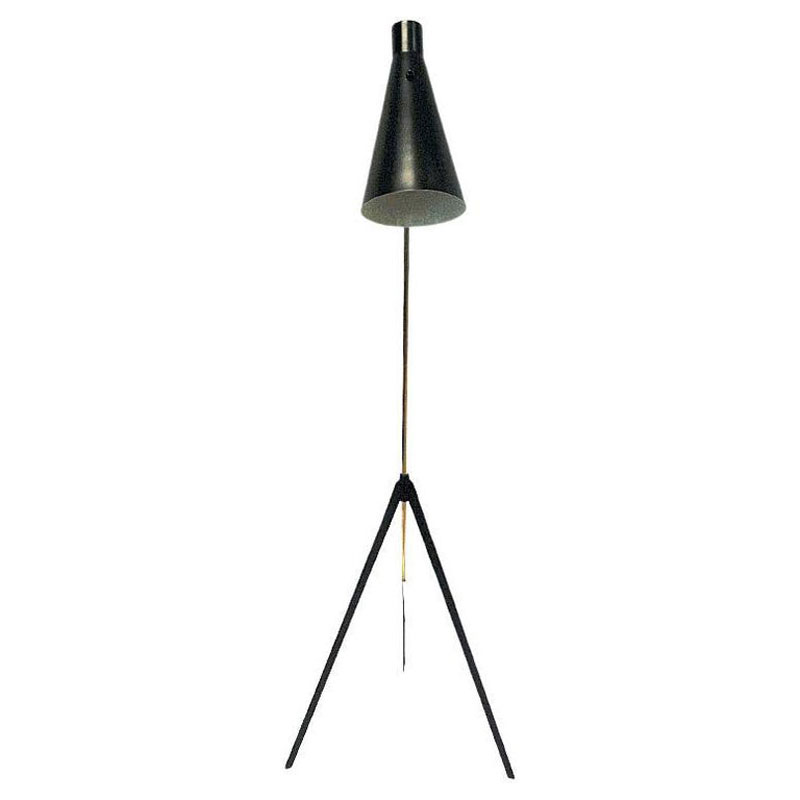Grandfather clocks are not, almost as a rule, something I find appealing. There is of course that teak one that looks like an Arne Hovmand Olsen design, but beyond that I cringe.
So imagine my surprise when I saw this strange grandfather clock. The money just flew right out of my pocket.
And strange it is. It is by a german clock company, Urgos, from 1977. Purchased in Germany.
Has anyone every seen anything like it?

Wow. Evelyn Ackerman meets...
Wow. Evelyn Ackerman meets Black Forest is exactly right! (I was not familiar with the Ackermans).
It makes me laugh how all the elements I so dislike as a Black Forest Cuckoo Clock: (the cuckoo, the owl, the deer, and oak leaves, and a random song bird) can be combined differently to make a fantastic modernist statement. It makes me realize how provocative the whole modernist movement was when it started.
I would love to hear more about it. Do you know if it was made by Urgos, or if it is only an Urgos movement and an Urgos "sticker" for the face?
I absolutely love it, and was beginning to think I would never learn another thing about it.
Mine also leans a bit. (Eventually I will take the shim out and put some adjustable feet on it so that I can level it in a more elegant fashion.)
There seems to be a consensus here so far that antique tall clocks (the proper name for grandfather clocks) are tacky, and that the modernist ones are superior in design and execution. I won't dispute that there are a lot of tacky antique-style grandfather clocks around (mostly reproductions made in the 20th century), but I think the idea that the modernist ones are necessarily better is a mistake. Lets consider arguably the fundamental ideal of modernism - i.e. that form follows function.
Then lets look at the history of tall clocks. They were invented in the shape they were because they needed to have very long pendulums and weights hung on long chains. The shorter the chain, the sooner it needed to be rewound. The first clocks (1500 and 1600's) were mounted on walls without a case, but they would get very dirty and brass clock-works are damaged by dust and expensive to clean, so they were encased in wood boxes, with glass to show only the clock face. The resulting design, with a long, thin tall clock case, and a clock face on the top, was therefore a perfect example of form following function.
Now to the 20th century. Both the modernist clocks shown above seem to have pendulum movements (unless the pendulums are fake which is even worse), but did that really make sense in the mid-20th century? Electric clocks were infinitely more accurate. Furthermore I would argue that the electric Nelson clocks of that era were not only more accurate, but far more beautiful. (I have to say that the Urgos clock above is kitschy but cute, whereas the Nelson grandfather clock above makes my skin crawl). Worse, both of the modernist grandfather clocks shown above seem to be open and exposed to dust, which defeats the whole purpose of the tall clock to begin with.
Here's a very early tall clock from the 1600's and some of the modernist electric Nelson clocks. I will argue that because it is of its time, and because it adheres to the principal of form following function, that this tall clock is actually a much more "modernist" clock than the ones above, and that it would be much more appropriate with the Nelson electric clocks. What say you? Is this too heretical to consider here?


Interesting perspective. I understand that you don't like the Urgos clock and are trying to examine why, which is a valuable project.
I can only comment on why I like the Urgos clock so much. I see it as a piece of art, which also happens to function as a grandfather clock.
So that it isn't an accurate time keeper is irrelevant. (It is a real mechanical clock, by the way, not a fake battery powered one). That it is making a statement about Black Forest clocks is of some interest to me, but also fundamentally irrelevant to why I like it. I suppose because of this it is fair to call it "kitschy" although in my part of the world it takes an intellectual understanding of kitsch to see what you mean.
Or if you must, it serves an aesthetic function and the form follows that. But I think it really is more accurate to think about Form following Function and Art. Otherwise the term Modern Art would be an contradiction in terms. And I suppose for some people it is.
Gropius makes very good points here, ones that have application when considering design of any period, I believe.
Overlaid on the rational understanding of form is an emotional response, whence we get the "I don't know much about art but I know what I like" statement, sometimes heard.
Indeed we live in a "both/and" world, rather than an "either/or" one -- which makes discussion more interesting if sometimes more confusing.
If this site is mostly about Twentieth-century design, that doesn't mean that we should ignore other periods -- especially when an understanding of earlier efforts sheds light on later ones.
Sorry, leif, I wasn't trying to dump on your clock. I was really trying to raise the issue that SDR vocalized; the possibility that modernist design isn't better simply because it is newer than what came before, and that context can be very important. Some of the great modernist designers had their off (way off) days, which is where I would personally put the Nelson grandfather clock. But if you want to discuss my reaction to your clock, then your response raises another interesting question of where is the sometimes fine line between art and kitsch.
I will admit that the art/kitsch line is probably very personal. I posted a carved wood piece some time ago asking that very question, though it didn't generate much discussion: http://www.designaddict.com/forum/General-discussion/Art-or-Kitsch . My opinion was that the piece in my post was on this side of the art line, but you may have the opposite view.
I actually quite like your Urgos clock from a distance where the decoration is obscured. I don't even necessarily object to the black forest subject matter. I think it would be hard to mix that many naturalistic motifs in a single piece in a modernist way, though it probably could have been accomplished by a master designer. Instead, my kitsch meter goes off because of the manner in which these motifs are modelled. The bird on top is just too plump and cute; the deer on the bottom has just too skinny a butt, and the oak leaves that are scattered around are just too rounded and fluffy. I think the designer was trying to have it both ways - to use the overall mass of the object to give a modernist spin to a "low-brow style of mass-produced art or design using popular or cultural icons" [quote from the wikipedia definition of kitsch].
What if these objects were available on sale at Walmart? Would they still be cool?
I could easily fall in love with any object, so long as my next door neighbor Mr. Jones doesn't already have it in his living room.
The point being: What unites interest in most of the objects presented here? It's arbitrage. It's the fact that the market doesn't universally value these objects everywhere. So there's a chance to make a buck. You can buy low in markets where the object's value is not recognized, and sell high in a separate marketplace where its value is appreciated. That's what makes it interesting and worth studying. If it's sold at Walmart, there's no arbitrage. If it's sold at Christie's, there's no arbitrage (or very little and what there is carries considerable risk -- trends come and go). The sweet spot is in the middle.
What rankles about companies like Modernica and InMod and all the other knockoff companies is they're collapsing the arbitrage opportunity. And it's the sign of all trends coming to an end.
It's like baseball cards in the late 1980s early 1990s. I'll trade you my 1956 George Nelson Marshmallow sofa for your 1952 Topps Micky Mantle. I hear Upper Deck is selling remakes of the 1952 Micky Mantle. Does that bode well?
When I walk down the main drag in Palo Alto, CA, every furniture store is selling some version or derivative of mid-century modern. A Crate and Barrel catalog arrived in the mail yesterday, and I ordered a tulip table.
When Mr. T starts hawking Gold as an investment, you know it's time to sell. Your neighbor Mr. Jones has bought-in to the trend.
JosephA, that's a completely different consideration - the market value of a item. Consideration of good design does not need to have any regard for market value. I think it is a mistake if you don't see the distinction. I will note that one of your posts for "the coolest chairs ever" http://www.designaddict.com/forum/Identification/coolest-CL-chairs-ever-any-ideas-what-they-are-who-dreamt-them were to my eye some of the ugliest, worst-designed chairs ever.
Did you like those chairs solely because you thought you might be able to sell them for a few dollars more than you paid for them? There's nothing wrong with that, per-se, but it has no bearing on the quality of their design. And I may be wrong, but my suspicion is that you were unable to make more than just a few dollars on them primarily because they are an example of such bad design. (Please don't tell me I'm wrong!)
If you need any help, please contact us at – info@designaddict.com









